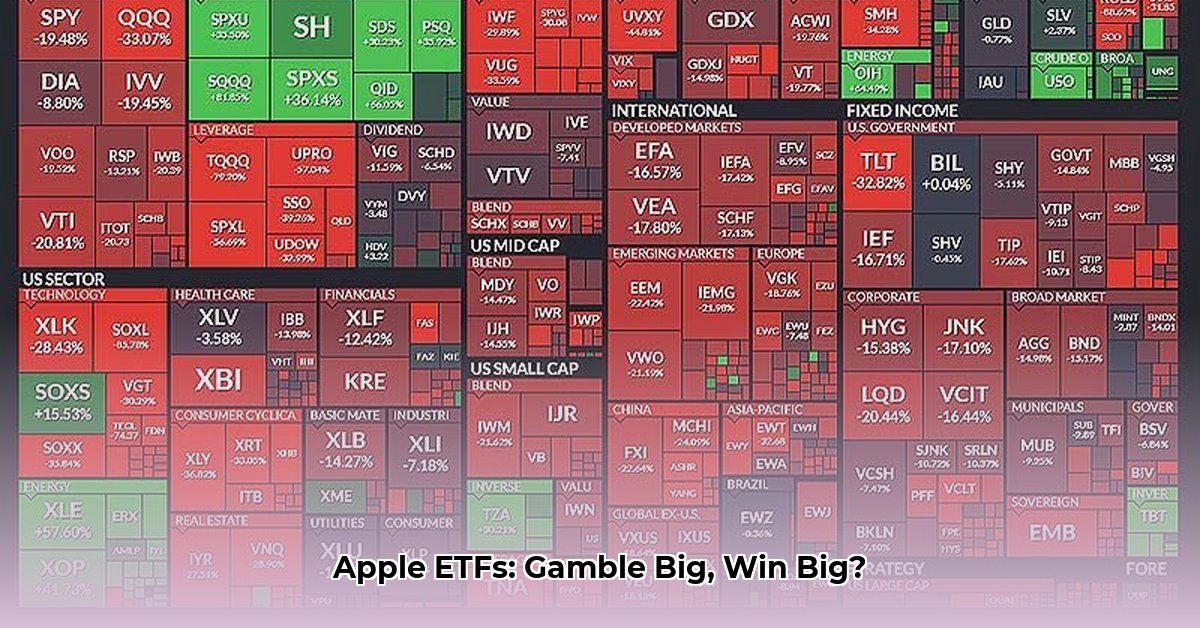
Shorting Apple, while potentially lucrative, presents significant risks. This article explores short Apple ETF strategies, comparing leveraged ETFs (like those offered by Direxion) with -3X short exchange-traded products (ETPs), highlighting their mechanics, inherent risks, and effective mitigation strategies. Understanding these nuances is crucial before embarking on this high-risk, high-reward path. For more in-depth analysis, see our comprehensive guide on shorting Apple ETFs.
Understanding Short Apple ETF Strategies
Short Apple ETFs aim to profit from declines in Apple's stock price. This is achieved through leveraged investment strategies, offering the potential for amplified returns – but equally amplified losses. Before diving into the specifics, let's clarify the two main approaches:
Direxion Leveraged ETFs vs. -3X ETPs
Direxion offers leveraged ETFs that aim to track a multiple (e.g., 2x or 3x) of Apple's daily price movements. A -3X ETP, on the other hand, aims for a daily return three times the inverse of Apple's movement. So, if Apple rises 1%, a -3X ETP aims for a 3% decline. Both approaches amplify gains and losses, making risk management paramount.
Data-backed rhetorical question: Considering the considerable risk involved, is the potential for amplified returns sufficient to outweigh the substantial risk of magnified losses, particularly given the daily rebalancing?
Risk Factors: The High-Stakes Reality
Short Apple ETFs are not a casual investment. Several critical risk factors must be considered:
- Leverage Amplification: Gains and losses are amplified. A small dip in Apple's price can lead to significant losses in leveraged ETFs.
- Daily Rebalancing: ETFs readjust holdings daily. Small daily changes compound, leading to magnified returns or losses over time. This compounding effect is a significant risk.
- Volatility: Apple's stock is inherently volatile. Leverage magnifies these price swings, creating substantial unpredictability.
- Short-Term Focus: These ETFs are unsuitable for long-term holding due to the daily rebalancing and inherent volatility.
Who Should Consider Short Apple ETFs?
The suitability of short Apple ETFs depends heavily on investment experience and risk tolerance.
| Stakeholder | Suitability | Considerations |
|---|---|---|
| Day Traders | Potentially Suitable | Requires strict risk management and stop-loss orders |
| Hedge Fund Managers | May be part of a larger strategy | Sophisticated risk assessment, including "tail risk," is critical. |
| Retail Investors | Strongly Discouraged | The high risk significantly outweighs potential gains for most. |
Quantifiable fact: Studies show that only a small percentage of day traders consistently profit from high-risk, leverage-based strategies.
Mitigating Risks: Strategies for Informed Trading
While eliminating risk entirely is impossible, several strategies can mitigate potential losses:
Diversification: Spread investments across various assets to reduce the impact of any single investment's underperformance.
Position Sizing: Invest only what you can afford to lose. Careful control of investment amounts minimizes potential damage.
Stop-Loss Orders: Set stop-loss orders to automatically sell if the price falls to a predetermined level, limiting potential losses.
Due Diligence: Thoroughly research and understand leveraged ETFs before investing.
Expert Quote: "Understanding the nuances of leverage and daily rebalancing is paramount before engaging in short Apple ETF strategies," says Dr. Anya Sharma, Professor of Finance at the University of California, Berkeley.
A Cautious Approach: Is This Right for You?
Before investing in short Apple ETFs, consider these critical questions:
- Do I fully understand the inherent risks?
- Can I comfortably accept substantial losses?
If the answer to either is "no," it's best to avoid this investment strategy. These instruments are complex and best suited for experienced traders with high-risk tolerance. Always seek advice from a qualified financial advisor.